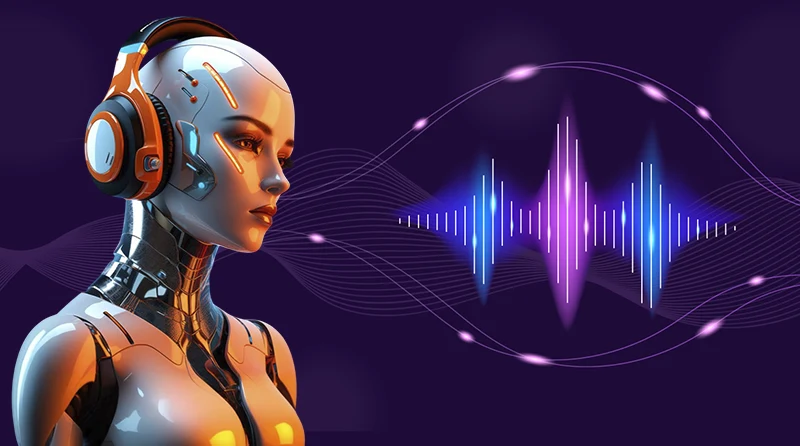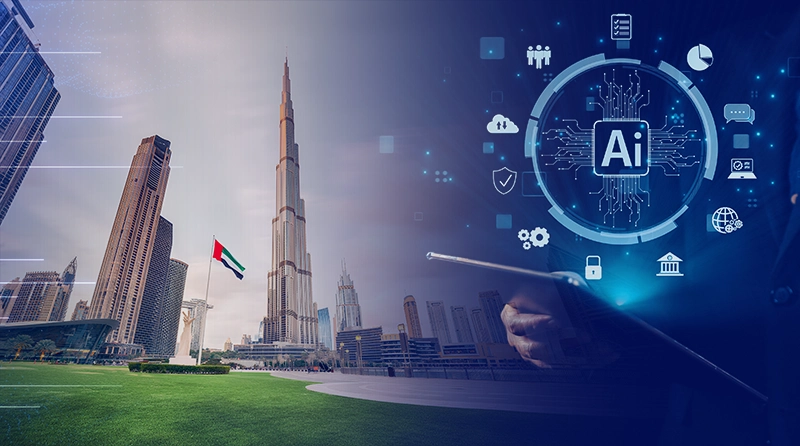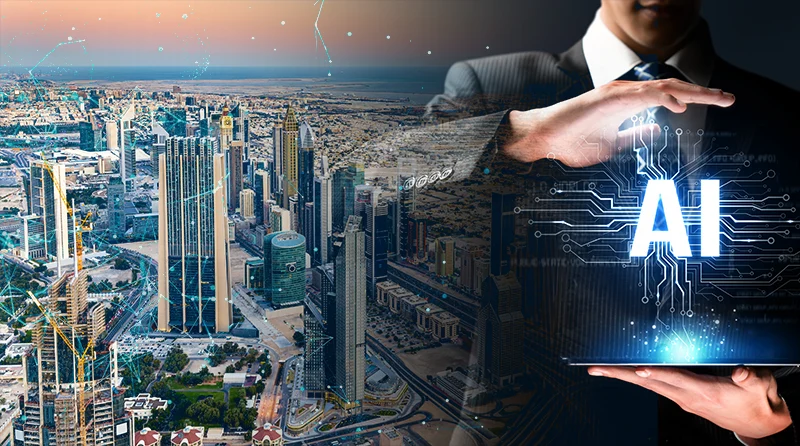10 Best Free AI Photo to Video Apps (2025)

Did you know, WordStream found that Facebook video ads get 2–3× higher CTR than image ads? So, if your photo-based ad gets clicked just 1% of the time, a video version might reach 2–3%.
Also, a recent Minta case study shows that video ad leads cost just $2.75, while image-based ads for the same product, message, and platform cost $14.22 per lead. That’s around 80% cost savings, just by switching to video.
But what if you don’t wish to spend thousands on video production or want to repurpose your product photos into engaging ads? Here’s the good news. There are several free AI photo to video apps that you can use to turn static images into captivating, professional-quality motion videos complete with background music, smooth transitions, and captions.
According to a 2024 Zapier report more than 40% of small businesses now make films using artificial intelligence capabilities. This helps creators save around five hours a week on content creation, on average. And you can get it done without using sophisticated editing software or paying a video editor. These image to AI Video apps can create magic.
This guide covers the Free AI photo to video apps that allow everyone to create videos, regardless of their skills or budget. Read on to explore some of the top apps currently available and find out all about their unique features and capabilities.
What is AI Photo to Video App?
Think of it this way: you’ve got a bunch of static photographs. Maybe it’s a product shoot, a few mood boards, or a sketch you doodled on your phone. Now imagine turning those into a dynamic, shareable video without touching a video editor or having to hire anyone. That’s what an ai photo to video app does.
The tools utilize machine learning models like neural networks and diffusion models that learn from extensive video data to analyze your photos. They identify animatable elements such as people, objects, and backgrounds, uncover patterns, and determine their motion.
The software adds depth, zooms, fades, and scene transitions like it’s guiding the viewer through a mini-story. Some of the tools can add music or even voiceovers, automating much of the video creation process.
So, what input do you need to provide? No, you don’t need any advanced technical know-how. You just pick a style. Upload the image of your choice. Type in a few lines to describe your vision. That’s all it takes to get a video that looks like it was created professionally in a studio.
Pro Tip: Simplify your prompt and avoid overanalyzing it. Simple, unambiguous concepts are typically more suited for AI technologies than too complex directions.
What opportunities do these instruments present? Here’s a brief overview:
- A realtor can generate virtual mini-tours from property photos, showing gentle camera movements that pan across rooms or zoom in on special features like custom fireplaces or kitchen details.
- A marketer can zoom in on the best part of a product image to highlight its USP and build a looping reel in minutes.
- Businesses in the food industry can make Instagram ads with static photos of their food items transformed into mouth-watering videos showing steam rising from freshly brewed coffee or chocolate slowly melting on croissants.
- Teachers can bring study materials to life, adding slight movements in scenes from history, or convert a textbook diagram into a labeled animation, helping students better connect with their lessons.
With models like GANs, the best AI photo-to-video apps can dream up movement that feels intentional, sometimes even more polished than what a human editor might create. Moreover, this can be done on a budget and in just a few minutes.
List of Top 10 AI Photo to Video Apps
Given the numerous options available in 2025, selecting the right AI photo-to-video application can be an overwhelming task. To simplify the decision, we’ve compiled a comparison of the 10 best AI photo-to-video apps in the market, with an overview of the key features that match different user needs and skill levels.
| Tool Name | Video Quality | Ease of Use | Free Plan Availability | Best For | Key Strength |
| Runway | 720 p (upgradable to 4 K) | Moderate | Yes (credit-based) | Professionals | Cinematic control & film-like transitions |
| Pika Labs | 4 K (via upscale tools) | Easy | Yes (generous credits) | Social creators | Creative effects & viral content |
| Kling AI | 1080p+ (Cinematic HD) | Easy | Yes (daily credits) | Character animation | Character animation & lip-sync |
| Akool | Up to 4 K | Easy | Yes (trial credits) | Content creators | All-in-one suite & face swaps |
| Veed.io | 720 p–1080 p | Easiest | Yes (limited, watermark) | Beginners | Online editing & subtitles |
| Vidu | 1080p (anime-
focused) |
Easy | Yes (credit-based + off-peak) | Anime creators | Anime & character consistency |
| LTX Studio | 1080p+ | Moderate | Yes (credit-based) | Storytellers | Multi-scene planning |
| Vidnoz | 720 p–1080 p | Very Easy | Yes (daily minutes) | Business users | All-in-one video & avatars |
| Hailou | 1080 p+ | Easy | Yes (daily credits) | AI Animators | Motion effects & cinematic flair |
| Prome AI | 1080 p | Very Easy | Yes (limited coins) | Designers & architects | Professional design integration |
10 Best Free Image to AI Video Apps
1. Runway AI—The Filmmaker’s AI Co-Pilot

Runway has become the filmmaker’s AI tool of choice. The tool is built for projects that demand a higher level of polish and control. It’s an entire creative suite that hands over total control to the creators. This tool was originally considered one of the best AI photo-to-video apps for professional video editors and visual artists. But thanks to its wide selection of AI tools, it’s now popular among everyday creators who wish to add a cinematic feel to their content. It offers multiple video styles (cinematic, stylized, animation). You can mix styles as well. Also, the tool simulates camera movements in diverse styles, such as pan, zoom, and dolly.
What Makes It Special:
- Gen-2 & Gen-3 Models—the technologies behind Runway’s video magic—understand the context and create remarkably natural motion.
- Its Motion Brush tool lets you “paint” motion onto specific parts of your photograph. Want the waterfall to move but not the rocks? Just brush over the water, it’s that simple.
- The built-in video editor allows you to erase objects, create “slow-mo” effects, expand frames, and even teach the AI to match your own style.
Pro:
- Professional-grade output suitable for commercial use
Con:
- Steeper learning curve than some of the other alternatives
Pricing: Free plan with 125 credits, also limited to 3 video projects and 720p exports. Paid plans start at $12/month.
2. Pika Labs—Best for Stylized Visuals

Filter-heavy Pika Labs can transform even a simple selfie or sketch into something vibrant with creative effects designed to grab attention. The tool focuses on creating eye-catching content that can easily go viral—think glows, particle effects, color distortion, and dynamic zooms—all layered over your static image.
The videos Pika creates feel authentic because the app is designed to understand how things should logically move in real life. For example, if there’s a scarf in your image, it doesn’t just twitch randomly. Pika makes it flutter just like it would if caught in a breeze. This effect is possible because the app simulates real-world physics: weight, momentum, and direction when it animates your image.
What Makes It Special:
- You can generate videos from text or images in mere seconds, making it one of the fastest tools available.
- You get to choose from a library of trending effects tailored for platforms like TikTok and YouTube Shorts. Pikadditions lets you add objects to your videos, Pikamemes helps you create animated GIFs from selfies, and Pikaffects allows you to apply wild effects like “levitate,” “explode,” or “melt” to your video.
- Pikaswaps lets you replace anything in your video—a person, an object, or a background—just by uploading a photo or describing the replacement by typing in a few lines of text.
Pro:
- Incredibly easy to use—templates guide the process
Con:
- Long wait times during peak hours
Pricing: Free tier with 80 monthly video credits but limited access to AI features; premium plans start at $8/month.
3. Kling AI—The High-Fidelity Animator

Kling AI uses animation techniques that were once only possible with pro-level software, such as anticipation (pre-motion build-up), follow-through (natural stop after motion), and secondary animation (extra elements like hair or clothing reacting). These small details bring the characters to life.
Kling also analyzes facial expressions to add mouth movements that sync with audio and match the tone of what’s being said. The accuracy made possible via deep learning, in conveying emotions, boosts the connection with the viewers. The tool is especially useful in creating brand characters in marketing videos or in educational content where the presenter needs to stay consistent across multiple clips.
What Makes It Special:
- It can add ambient effects like rain, fog, or spotlight and apply lighting changes to static photos.
- You can swap, remove, or insert visual elements within your video, which comes in handy if you need to edit scenes.
Pro:
- High-end video-like outputs with incomparable realism and unparalleled motion synchronization
Con:
- Credit-limited free version with slow rendering
Pricing: Daily credit system in the free plan, offering basic access with watermarks. Professional plans start at $18/month.
4. Akool—All-in-One Video Creation Suite

Akool is a full generative AI suite that turns photos into 4K videos with animated avatars and can even translate voiceovers. One of its unique features is its face swap technology. It lets users replace faces in the videos, which traditionally required specialized skills.
Its 4K output capacity ensures that the generated videos can be displayed without any distortion across platforms. Voice cloning, full-scene customization, and background removal are some of the other enhancement tools that let even beginners create professional-quality results.
What Makes It Special:
- You can animate a still image, generate voices, translate your script, and stitch it all into a video without ever leaving the platform. Whether you’re working on an ad, a birthday greeting, or a product demo, everything you need is right there—ready when you are.
- For brands or dev teams, Akool’s API lets you integrate its features—like streaming avatars or instant face swaps—directly into your website or app.
Pro:
- Fast generation time—10-30 seconds in most cases
Con:
- Watermark in free exports
Pricing
Akool offers a free plan that provides 80 credits and allows the production of 1.5 minutes of video. Paid plans start at around $21/month.
5. Veed.io—Beginner-Friendly Editor

Veed.io is a cloud video studio that runs entirely in your browser. Once you upload images, arrange them on a timeline, and add music, captions, or voiceovers, the app turns the images into polished videos—no downloads or installs are needed. You can also describe movements with a text prompt, such as “camera panning” or “zooming,” and the AI will generate the animation.
What Makes It Special:
With a drag-and-drop editor and platform-sized templates for Instagram Reels or YouTube Shorts, Veed.io makes professional editing simple and quick.
Its automatic subtitle generator makes it especially useful for social media creators, educators, and marketers trying to reach global or hearing-impaired audiences.
It also offers a browser-based workspace for real-time team collaboration, which allows you to share your projects with your team, leave comments, and edit together online. It is especially useful for distributed teams and freelancers working on shared projects.
Pro:
- Built-in library with stock media, music tracks, and sound effects in-browser.
Con:
- Watermark in the free version.
The free plan provides access to core features. Paid plans start at $18/month for watermark-free, HD exports.
6. Vidu—The Anime Specialist with Character Consistency

If you’ve ever tried making AI-generated animation and found your characters kept changing mid-scene—different clothes, faces, or styles—Vidu was made to fix exactly that. It’s one of the few tools that lets you upload reference images for your characters and then keeps their appearance consistent throughout the video.
Vidu is for creators working with anime-style narratives. Its animation engine understands dynamic poses, fluid expressions, and anime aesthetics.
What Makes It Special:
- You can upload up to seven reference images for your character or setting, and Vidu makes sure those visual elements stay consistent throughout the video—the same face, outfit, colors, and style.
- Vidu’s engine knows how to animate dramatic poses, expressive reactions, and action sequences in a way that matches the anime genre.
- Its rendering engine is lightning-fast even with detailed animation.
Pro:
• Unlimited free generations in off-peak mode
Con:
• Works best for anime or stylized animation; less reliable for realistic or cinematic video
Pricing: Free signup credits and unlimited generation during off-peak hours; paid plans start at $20/month.
7. LTX Studio—Excellent for Storytelling

LTX Studio is designed for creators who need control over video structure. It supports multi-scene planning with continuity between frames.
The platform’s AI-powered storyboarding features are packed with tools that can handle complex, multi-part video productions. You can upload multiple images, and the AI tool will suggest the narrative sequences, scene transitions, pacing, and story flow.
Thus, it serves as a complete narrative development platform rather than just an image-to-video AI app.
What Makes It Special:
- The algorithms in this AI tool are trained to generate attention-grabbing motion that performs well in social media feeds.
- It includes built-in pre-production tools with which you can create characters with names and roles, write scene-by-scene dialogue, and control the pacing—speeding up or slowing down moments—on a simple timeline.
- It allows export in 1080p+ resolution.
Pro:
- Built-in analytics to track video performance with insights on viewer engagement
Con:
- It may feel less intuitive than template-driven tools
Pro Tip: Use LTX Studio when your video involves a step-by-step process, such as product launches, tutorials, or scripted explainer videos.
Pricing: The credit-based free tier provides 1 hour of computing time per month; professional plans start at $19/month.
8. Vidnoz: AI Avatars with Business Presentation Templates

What makes it stand out is its AI avatar system, which lets you choose a digital presenter to deliver your script naturally—with accurate lip sync, facial expressions, and gestures. You can even bring a portrait photo to life as a talking avatar, which makes it ideal for social media intros or personalized brand content. You can use this feature for short promotional videos—like a “thank you” from your founder or a quick tutorial from a character. You don’t need to download any software or conduct any filming.
The tool provides pre-made templates for presentations, tutorials, and onboarding videos with multilingual support and corporate-friendly visuals.
What Makes It Special:
- You can just upload a photo, type a script, and turn it into a speaking avatar—ideal for welcome messages or explainer clips.
- Its suite of preset styles or custom edits, complete with text, music, and voiceover, makes animating your photos a breeze.
- It gives a vast array of assets to choose from—over 1,500 AI avatars, 1,800 voices, and 2,800+ video templates—no need to start from scratch.
Pro:
• Up to 3 minutes of video every day, completely free.
Con:
• Avatars not as hyper-realistic as those from other high-end competitors.
Pricing: The free plan allows up to 3 minutes/day in 720p; paid plans start at $19.99/month.
9. Hailou AI—Best for Short-Form Experimentation at Scale

Hailou AI is designed for creators who want to test ideas fast and affordably. Instead of making you count every click, it hands you 100 free daily credits. Whether you’re crafting short storyboards, animated promos, rapid-fire social content, or just testing what’s possible with AI video, this platform gives you unlimited creative tries without racking up costs.
Built by MiniMax, its dynamic motion quality and ability to generate 6-second clips from still images or even text prompts make it stand apart from its competitors. The AI adds lifelike motion, camera flow, and emotion.
What Makes It Special:
- You can type in phrases like “pan left” or “zoom in” to guide the camera’s movement; no editing timeline is required.
- The beta version lets you upload a character image to keep their face and design consistent across different clips.
- It simulates fog, water, fire, wind, and fabric movement with impressive realism for atmospheric shots.
Pro:
- Text-based descriptions of lighting, mood, and spatial motion precisely processed
Con:
- 6-second video limit unsuitable for long-form storytelling or explainer video content
Pricing: Free plan with 100 daily credits; paid tier starts at $9.99/month.
10. Prome AI—The Designer’s Powerhouse

Prome AI was built for professionals who work with visuals, especially architects, designers, and product teams who need their ideas to be animated. It turns static renderings or sketches into motion videos that feel like real walkthroughs.
For architectural portfolios, you can use a slow pan. It turns a still into a dynamic video without breaking the visual integrity of your design. You can also write a brief description of the visuals you want, and Prome will come up with a video with matched motion and framing. The interface is simple, and the results are presentation-ready without needing video production skills.
What Makes It Special:
- The app features design-focused tools, including sketch-to-real rendering, background control, and style settings tailored to architecture and product visualization.
- It is focused on details, keeping colors accurate and visuals sharp, which is important for client-facing work.
Pro:
- Motion effects are subtle and design-aware—nothing flashy that distracts from the work itself.
Con:
- Serious use requires a paid plan.
Pricing: The free plan includes 10 free coins/month for non-commercial use—enough for testing. Paid subscriptions start at $19/month.
Conclusion on Free AI Photo to Video App
In 2025, creativity is no longer shackled by the need for expensive equipment or years of technical training. Turning a photo into a video doesn’t require a studio, a team, or hours of editing. With today’s free AI video generator tools, video production can now happen in under five minutes, using just your phone or laptop.
If you’re running a small business, teaching a class, building a brand, or launching a campaign, these apps reduce many of the tedious tasks—no more hours of scripting, shooting, editing, or outsourcing to audiovisual artists. You stay in control—and you move faster.
Many of the free AI video generator tools of today offer intuitive interfaces, pre-set templates, and AI-powered suggestions that simplify the entire process, both for seasoned creators and complete beginners. From applying text overlays to background music to mimicking expert-level camera movements and character animations, these platforms handle it all.
Video already dominates the web. It accounts for over 80% of all internet traffic and drives 12 times more social shares than static or text-based content.
Moreover, embedding video on landing pages can boost conversions by 80%. An impressive 88% of marketers report that video has improved their ROI.
Therefore, the sooner you bring motion into your content, the stronger your digital presence becomes.
So why wait? Pick one image-to-video AI app. Run a test project. And see the results for yourself.
FAQ’s on Best Image to AI Video App
Which is the best AI for image-to-video?
The “best” AI app for image-to-video generation depends on what you’re trying to make, your budget, and the production quality you require.
- For professionals requiring the highest quality output, Runway ML consistently delivers exceptional results with advanced motion generation capabilities.
- For high-quality character animation and lip-syncing, Kling AI is the top choice.
- Vidu is the top choice for anime-style storytelling.
- Pika Labs excels in creating entertaining, viral social media effects.
- For budget-conscious users, Hailuo can be the perfect choice, as it offers 100 daily credits in its free version, combined with an output quality that rivals paid platforms.
Is there a truly free AI video generator?
Technically? Yes. Practically? It depends on your expectations.
Some of the popular image-to-video AI apps like Hailuo, Vidnoz, and Pika Labs offer free tiers that don’t need any upfront payment. Hailuo gives 100 daily credits, Vidnoz grants free daily minutes, and Pika offers monthly credit refreshes. Vidu’s Off-Peak Mode even lets you create videos without limits—just stick to off hours.
Just keep in mind: free often means watermarks, capped resolution, or slower rendering.
Can I use AI-generated videos for commercial purposes?
In most cases, yes—especially if you’re using a paid plan. The best AI photo-to-video apps offer brand kits and commercial-use licenses for music, visuals, and templates.
However, the free plans may not offer full commercial rights. Some of the tools limit usage to personal projects in the free tier or add visible watermarks. It is better to double-check the licensing terms before you use the videos for client work, ads, or monetized content.
Is the Runway AI video generator free?
Yes—but with limits. The Basic Plan comes with a one-time 125-credit bundle. That’s enough to try it out and make a few videos. After that, you’ll need to upgrade to the paid version.
Do I need editing experience or technical expertise to use these tools?
Not at all. Most AI video platforms today, even the free AI video generator platforms, are designed for beginners. If you can upload a photo, type in a description of the output you want, and maybe drag and drop a template, you’re all set.
Even if you’ve never edited a video before, these tools should be easy to use. These will walk you through the process step-by-step. It’s like having a mini creative assistant sitting inside your browser.










